 |
|
| Issue #104 • March/April, 2007 |
It seems like every winter there are news stories of people getting stranded for weeks in bad weather while driving through the many remote areas of our country. In fact, this past winter, our nation held its breath waiting for news of James Kim and his family who got lost traveling the snowy roads of Josephine County in Oregon, not far from where this magazine is published. While his wife and daughters, who stayed with their vehicle, were eventually found alive, he succumbed to the cold as he hiked through snow looking for help for his family. And there are also many cases of people trapped for days in their vehicles after skidding over a bridge embankment, even though they were only a few hundred feet from a busy highway.
I have written many articles about how to prepare your home for a power outage or national emergency, but today I want to address how to be prepared for an emergency when traveling in your car or truck.
|
Keeping warm and safe
Warmth, of course, is a major concern in cold climate and snow emergencies. Since you’ll be with your car, you’ll have that as protection against the elements. but extra clothing (preferably wool), some blankets, and a sleeping bag will keep you warm if you are stranded for several days. Store these items in a plastic trash bag in your trunk or behind the seat of your pickup. I recommend wool clothing because it sheds moisture, just in case you have to leave your car during wet or snowy weather. It’s no fun being stranded and cold, and hypothermia is a real danger in cold weather.
If stranded, you may not want to run your vehicle heater for very long so you can conserve gasoline. But if you do run your car engine to operate the car heater, be sure you aren’t breathing in carbon monoxide fumes from the exhaust. In a snow emergency, you must make certain that the car’s exhaust pipe is not clogged with snow, and be sure the exhaust is not being sucked into the car through an open window at the rear of the vehicle. Opening a front window a bit will help admit fresh air into the passenger compartment. You can’t smell carbon monoxide, so don’t rely on your nose.
Finding supplies
Once you’ve ensured you and your family will be warm during a car emergency situation, you need to ensure you’ll have enough food and drinking water. I realize that not everyone lives near a camping or sporting goods store stocked with all kinds of really great fold-up and lightweight camping equipment. Substitutes for many of the specialized camping equipment and freeze-dried foods you will need can be found in most grocery stores, if you know what to look for.
|
The two biggest complaints I hear from people when it comes to buying emergency supplies are the high cost for items they may never actually use and the need to replace out-of-date food that was never eaten. Yes, those tasty freeze-dried, ready-to-eat meals from most camping stores are expensive, and yes, many may never actually be used. But that is also true of buying a fire extinguisher, as you don’t intend to ever actually use it either, but it’s a real life saver if you do.
To address these high-cost concerns and the difficulty to locate camping stores that stock hard-to-find survival equipment, I decided to assemble a 10-day emergency food supply by shopping only in a typical chain grocery store, and I kept the total cost under $25. This is very cheap insurance if you travel through areas where you would not want to be stranded, and you will not be out that much if you have to occasionally replace items that have reached their expiration date.
Drinking water supply
A person can actually live many days without any food, but your body must have drinking water. This is easy to solve by tossing a few plastic gallons of bottled water in your vehicle’s trunk, but these will not last long during an extended crisis, so an additional source of water is available by using purification tablets to treat any available surface water. For less than $5 you can purchase a bottle of tablets that will completely transform almost any water source into safe drinking water.
Unless you are stranded in a desert, you can usually find water somewhere, even if it’s from a drainage ditch, creek, lake, or melting snow. You can use one of the empty gallon water containers to hold the collected surface water while you add the tablets, which will kill off all the bacteria and harmful organisms in about 30 minutes.
Food and drink mixes
When it comes to stored emergency food, you want meals that are easy to prepare, use little or no cooking equipment, and tastes good. Since you could be injured or trapped, you want to keep it very simple. You may have limited trunk space and may have to carry this emergency food supply some distance if you must leave your vehicle, so you want to keep its size and weight to a minimum. This means you need to buy foods that are highly concentrated and only require hot water to prepare.
There are many drink mixes and dehydrated food packs that are inexpensive and can be found in any large grocery store, although they are not actually advertised or sold as emergency or camping supplies. Be sure to check all expiration dates and purchase only the newest stock. Most of these recommended products can provide good nutrition and taste variety over many days. The packaged meals I am recommending are sold in individual moisture-proof foil pouches and require only a cup of very hot water to reconstitute into a tasty hot meal that will serve two people.
|
As you start shopping for the food items I have listed, you may find different items you would like to add or change. Just make sure they only require hot water to prepare and still provide a good variety.
You may also want a few things to eat that do not require any hot water or cooking. Several small sealed packages of beef jerky and trail mix or candy bars are a good choice. However, avoid any foods or snacks that contain ingredients like chocolate, which can melt when stored in a heated car trunk.
Heating foods and drinks
No matter what brands and types of “instant” meals and drink mixes you purchase, you will need an easy way to heat water. The water can come from gallon jugs of bottled water you hopefully remembered to bring along in your trunk, or from creek water or snow you heated or chemically treated with the purification tablets. Since most of these meal packets are sized for one to two servings, each will require only one or two cups of hot water. It would be nice if you could find enough dry twigs and sticks lying around to actually build a campfire each night, but this will be impossible in a blizzard or heavy rainstorm.
Since you would be living out of your car or truck cab during this emergency, you will need a simple way to boil water inside or outside the vehicle. Your emergency food supply should include a large handful of “strike-anywhere” kitchen matches, but these are becoming very hard to find due to endless government safety regulations, so you will probably only be able to buy “safety” matches that must be struck on the side of the matchbox. Camping stores offer all kinds of low-cost fire starting and cooking products, but again, I am assuming you are only able to buy supplies from a nearby grocery store. Place your matches in a discarded prescription drug bottle or empty baby food jar to keep them dry. Those lucky enough to find “strike-anywhere” matches can dip the heads in melted candle wax, which makes them virtually waterproof.
For heating water inside your vehicle or on a car hood, you will need a metal container of “canned” heat, typically sold at grocery stores to keep food serving trays hot. If you have the space, keep several handy, but one should last several days and is reusable, thanks to an air-tight cap. Please use good common sense when burning canned heat inside any vehicle, small tent, or storm shelter, and make sure it is placed on a solid, non-flammable surface. You must leave a window open enough to prevent asphyxiation, and keep clear of any other fuel containers or gasoline leaks.
|
I found a small, lightweight saucepan that cost $5 and an enameled-metal coffee cup for $4 at a Wal-Mart, and either will serve our purpose. Make sure any water-heating container you buy has a sturdy handle that will allow holding over an open flame without burning your hand, as you will not have a stove-type surface or fire grate. I was able to heat a large cup of cold water to more than 180° F in just six minutes using the inexpensive enameled-metal coffee cup and canned heat as shown in the photo. It was not that hard to hold the cup for this length of time, and the handle remained fairly cool.
Camping stores sell fold-up metal supports for this canned heat, but these supports are not usually stocked in grocery stores. And I really like the stainless steel cups with long sturdy fold-up handles that will keep your fingers away from the flame, but again, these are sold only in camping supply stores.
You need only one or two cups of water at a time, so you will not want to hold a large pan full of water over a fire for very long. Your saucepan or metal cup will most likely also serve as your “plate” to eat from after preparing a dehydrated food packet. However, if you have extra trunk space, it’s really nice to have some paper plates and paper towels along, which store forever if kept dry. Most dehydrated food packaging uses strong Mylar or plastic coated aluminum-foil construction, and some brands may even allow adding the hot water right into the pouch. You must carefully cut off the top and support the pouch on a solid surface to prevent tipping over. Do not try to hold a food pouch in your hand while pouring in boiling hot water or you may scald yourself.
Most pre-packaged meals require the water to be extremely hot, so you may need to stir the mixture and let slightly cool for a few minutes before eating. Since you can heat only one cup of water at a time, you may want to prepare your meal first. You can then refill the cup with water after eating to make hot water for coffee, tea, or hot cocoa to sip as you try to relax while waiting for the storm to end or rescuers to arrive.
Non-food items needed
|
Your emergency food pack will need a few items you should already have around the house or farm that you can re-use. These include some eating utensils and a really good locking-blade pocket knife or small kitchen knife. I also suggest taking a discarded prescription medicine bottle and filling it with a mixture of aspirin, Tylenol, Unisom, Benadryl, and Advil caplets, which should get you through most minor medical emergencies. If you really want comfort, for another $5 you can purchase travel-size packages of toothpaste, shampoo, hand lotion, toilet tissue, bar soap, hand sanitizer, some first-aid supplies, and a disposable razor.
While you are putting your emergency pack together, save up all those free packets of salt, pepper, and condiments they toss into the bag at every drive-through restaurant, as these will also come in handy for emergencies. If you don’t have a spare flashlight, purchase one of the new small LED-type flashlights that use three AAA-size batteries. These flashlights are small and very bright, and will operate weeks on these tiny batteries.
A 50-foot roll of 1/8 inch nylon rope and a 10×10 ft. plastic sheet are very handy for many emergencies. And finally, don’t forget that roll of duct tape.
You will need a container to keep your emergency food supply clean and protected from all those field mice that manage to get into any car or truck that contains food. You want a container that is fairly inexpensive and sturdy, includes a carry-handle, and could have other emergency uses like something to carry water. I recommend buying a small “6-pack” style plastic insulated cooler. Their small size and durable construction are perfect for keeping foods safe in a car trunk or behind a truck seat. Be sure to duct tape the lid shut, as most do not include a latch.
Finally, toss in a few self-tie kitchen-size plastic trash bags. They take up almost no room, and are a great way to store your discarded food and trash, which will reduce problems with waste smells and insects.
What’s in my cooler?
| Quantity. | Item | Servings |
| Food Items | ||
| 1 | Knorr chicken and pasta dinner | 2 |
| 1 | Knorr beef and rice dinner | 2 |
| 1 | Knorr chicken and rice dinner | 2 |
| 2 | Maruchan ramen noodle soup | 2 |
| 1 | Idahoan home-style instant potatoes | 4 |
| 1 | Idahoan four cheese instant potatoes | 4 |
| 1 | McCormick onion gravy mix | 4 |
| 1 | McCormick mushroom gravy mix | 4 |
| 2 | Armour treat in metal can | 2 |
| 2 | Armour Vienna sausage cans | 2 |
| 1 | Star Kist tuna in foil pack | 1 |
| 2 | Sardines in soybean oil | 2 |
| 10 | Single serving coffee pouches | 1 |
| 6 | Nestle instant cocoa pouches | 1 |
| 10 | Herb-ox beef bouillon pouches | 1 |
| 4 | Country Time lemonade pouch | 2 |
| 4 | Bigelow herb tea pouch | 1 |
| 2 | Peanut bar candy | 1 |
| Free | Salt, pepper, creamer, sugar pouches | — |
| Other Items | ||
| 1 | Small sauce pan | — |
| 1 | Enameled metal cup | — |
| 3 | Canned heat | — |
| — | Matches and/or lighter | — |
| — | Water purification tablets | — |
| 1 set | Eating utensils | — |
| 1 | Pocket or kitchen knife | — |
| 1 | LED-type flashlight | — |
| 3 | Extra batteries | — |
| — | First-aid supplies | — |
| — | Aspirin, Tylenol, Unisom, Benadryl, and Advil caplets | — |
| 3 | Plastic trash bags & ties | — |
Other items to consider stashing in your trunk
| Quantity | Item |
| ** | Toilet tissue** |
| 2 | Water -gallon jugs |
| 1 | 50-foot roll of 1/8 inch nylon rope |
| 1 | 10×10 ft. plastic sheet |
| 2 | Duct tape |
| 1 | Sleeping bag |
| 1 set | Extra clothing |
| 50 | Paper/plastic plates |
| 2 rolls | Paper towels |
| 1 each | Toothbrush &toothpaste |
| 1 each | Shampoo, hand lotion, bar soap, hand sanitizer |
| 2 | Disposable razor |
| ** Since a standard toilet paper roll is huge to pack, I always tell people to save the roll from their bathroom when it gets to a much smaller size, compress flat, and place in a zip lock bag. | |
[weaver_widget_area id=’articles_about_yago’ class=’text3′]


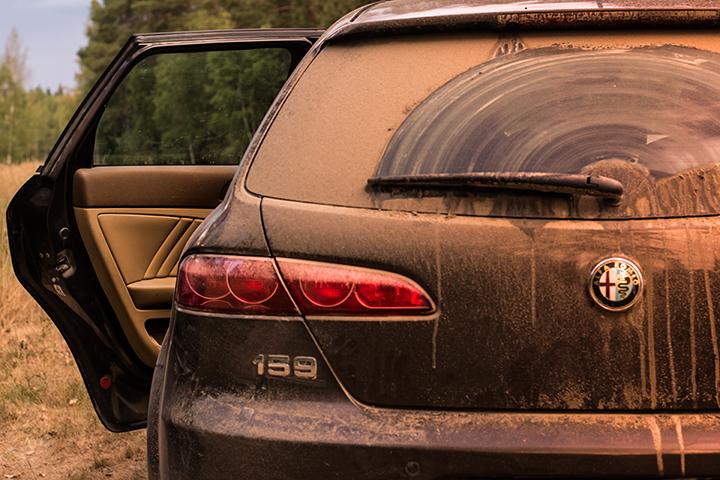












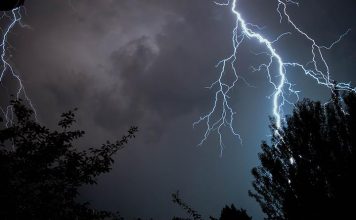
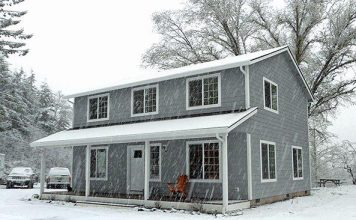

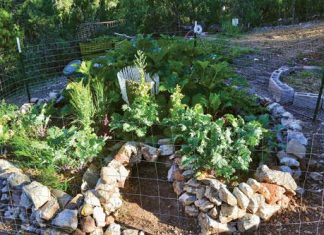
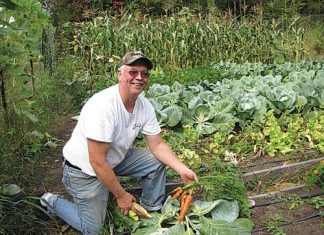
I don’t carry much food in trucks. However, I did add dehydrated miso-tofu soup and a saucepan, assuming there will be wild foods to add to it. Instant beverages (tea, EmergenC, etc.). The reason being is these are stable over many different weather conditions. I always carry a leatherman, cigarette lighter, waterproof matches, pocket knife, bandana handkerchiefs, paracord, a first aid kit, tarp, space blankets and car blankets, water jug (freshen water regularly) and a compass, too. We also carry a military-style tourniquet that can be applied rapidly with one hand. Consider a fire extinguisher. Good waterproof boots always. Rain gear. Hats, work gloves and extra sox/underwear/shirts. (You need to stay dry and warm.) I suggest people who travel in forests or wilderness areas have a chain saw or ax for those trees that might come down and block roads. Try to get to a clearing if you are caught in a storm! (Not a hilltop high point where you are exposed to lightening, though.) If you regularly travel to an isolated site, type up clear readable directions to the location and make sure everyone knows it is in the glove box. Post and maintain landmarks (signs, etc.) en route to the site so emergency vehicles could find it for a 911 call. Carry a charged cell phone. You may be better off if not encumbered by heavy safety equipment when you need to move fast.
Something else we always carry in trucks is extra cardboard boxes to be prepared. Often, we happen to find sources of wild foods to harvest. Mushrooms, berries and wild fruits, old homestead apple trees, herbs, etc.
Regarding storage in cold weather, I live in Northern Minnesota, but travel a lot for work. I have two versions of my “Get Home Bag” that I alternate throughout the year. I avoid packing wet food in cans for the simple fact that they would be very heavy to lug around. My storage focuses on rice, bouillion cubes, and dry soup mixes. I also took the hint from an SF buddy of mine and carry SPAM singles as well, these are packages in foil packages instead of cans, cutting down on weight and bulk. This gets us into the “Over $25” problem, but I also keep in my kit a Ruger 10/22 takedown with the clip together Magpul stock, I figure this will provide me with any added protein I need in the form of squirrels and rabbits!
Walmart has some nice little gas backpacking stoves, you may have to order it on line but it will fit in a cup and has an igniter built in. All for under $10 and the little gas canisters are inexpensive also.
I grew up in the south. but recently Spent 2 winters in Iowa. First time I realized I had to change my ways, was I had to use a laundromat, so left my liquid laundry soap in the trunk. You should have heard me laugh the first time I had frozen laundry soap.
I kept only packets of add water items in my emergency kit. A package of baby wipes will go a long way to keep you feeling fresh. If you are somewhere you can shampoo, you will be warm enough for the shampoo to not be frozen. I keep a small bottle of 3/1 bath gel in my kit.
Just a suggestion but get rid of the store bought ‘canned heat’. Check the Web and find a site that will teach you how to make a miniature stove out of two aluminum cans. The advantage is that they use alcohol which burns hotter, can be used as part of your first aid kit, and can be used over and over again simply by adding more fuel.
I live in Wisconsin and have the same situation. I simply divided the supplies into two separate coolers. One, with dry goods, etc, I leave in my car, the other I keep in the closet near my front door. This way I can grab it on the way out my door if needs be or grab it just as quickly if I have to return for other supplies (It’s illegal here to carry a rifle or other large firearm in your car other then during hunting season) before bugging out.
I’m in NewEngland and get cold winters. I cannot store cans, gels or other liquids in the car. What would you suggest for the gels and Liquids on the list? Example, Shampoo I can do one of the dry shampoos. Or just go with a bar or two of Ivory Soap (workable for hair also). What about the Canned food? it will most certainly freeze solid…